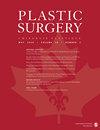Immediate Versus Delayed Mobilization After Cubital Tunnel Release Surgery: A Systematic Review and Meta-analysis
IF 0.6
4区 医学
Q Medicine
引用次数: 0
Abstract
Purpose: It is unknown whether early mobilization after cubital tunnel decompression improves functional outcomes without increasing complication risks. This systematic review aims to evaluate the effectiveness of early mobilization compared to delayed mobilization of the elbow after ulnar nerve decompression. Methods: Randomized controlled trials (RCTs) and observational studies comparing adults who received early mobilization or late mobilization were included. Embase, MEDLINE, CENTRAL, PEDro, clinicaltrials.gov, and the World Health Organization database were systematically searched from inception to January 2023. Results: Of the 2183 studies identified and screened, five studies (two RCT and three observational) totaling 224 patients (232 elbows) were included in this review. Evidence from two RCTs (100 patients) suggests that early mobilization may result in a large reduction in the amount of time needed to return to work (mean difference 40.1 days, 95% confidence interval [CI] 16-64 days earlier, I 2 = 85%, low-certainty evidence) and little to no difference in grip strength (0 kg, 95% CI = −0.17 to 0.17, I 2 = 0%, low-certainty evidence). There was little to no difference in adverse events or range of motion (low to very-low certainty evidence). Pooled results from the three observational studies showed similar findings (very low-certainty evidence). There were no studies that evaluated upper extremity related quality of life. Conclusion: Immobilizing patients for periods longer than 3 days appears to delay patient's return to work with no appreciable clinical benefit.肘管释放手术后立即与延迟活动:系统回顾和荟萃分析
目的:尚不清楚肘管减压后早期活动是否能改善功能预后而不增加并发症风险。本系统综述旨在评估尺神经减压后肘关节早期活动与延迟活动的有效性。方法:纳入随机对照试验(rct)和观察性研究,比较接受早期活动或晚期活动的成年人。Embase、MEDLINE、CENTRAL、PEDro、clinicaltrials.gov和世界卫生组织数据库从成立到2023年1月进行了系统检索。结果:在确定和筛选的2183项研究中,本综述纳入了5项研究(2项随机对照试验和3项观察性研究),共计224例患者(232例肘部)。来自两项随机对照试验(100例患者)的证据表明,早期活动可能导致恢复工作所需的时间大幅减少(平均差值40.1天,95%可信区间[CI]提前16-64天,i2 = 85%,低确定性证据),握力几乎没有差异(0 kg, 95% CI = - 0.17至0.17,i2 = 0%,低确定性证据)。不良事件或活动范围几乎没有差异(低至极低确定性证据)。三项观察性研究的汇总结果显示了类似的发现(非常低确定性的证据)。没有研究评估上肢相关的生活质量。结论:固定患者时间超过3天似乎会延迟患者重返工作岗位,没有明显的临床益处。
本文章由计算机程序翻译,如有差异,请以英文原文为准。
求助全文
约1分钟内获得全文
求助全文
来源期刊

Plastic Surgery
SURGERY-
CiteScore
0.67
自引率
0.00%
发文量
0
审稿时长
6-12 weeks
期刊介绍:
Plastic Surgery (Chirurgie Plastique) is the official journal of the Canadian Society of Plastic Surgeons, the Canadian Society for Aesthetic Plastic Surgery, Group for the Advancement of Microsurgery, and the Canadian Society for Surgery of the Hand. It serves as a major venue for Canadian research, society guidelines, and continuing medical education.
 求助内容:
求助内容: 应助结果提醒方式:
应助结果提醒方式:


